Domestically, there is not much content related to the new narrative Web3 x Agent. I am honored to have completed this research in collaboration with the potential AI project HajimeAI on Solana.
Looking back to January of this year, the approval of Bitcoin spot ETFs in the United States triggered strong bullish sentiment among investors and positive capital inflows. The crypto market continued to grow in the first half of 2024, with a total market value increase of 37.3%. Several crypto narratives gained strong momentum, and in my impression, Memecoin, AI, and RWA performed the strongest. Based on the performance of coin prices last week, AI still remains relatively strong, second only to Memecoin.

Web3 x AI has been heavily invested in by various Web3 VCs this year, and they have even been able to purchase old projects like TAO (Bittensor) on the open market. Therefore, I do not believe this is a fleeting narrative. On the contrary, it will continue to innovate along with the development of the traditional AI track.
For example, the latest trend in the traditional AI field, AI Agent, has also been brought into the Web3 world. In the first half of the year, a large number of Web3 x AI Agent projects were launched, such as Spectral and Olas Network. At the recent ETHCC, many Web3 developers and top VCs began to focus on the AI Agent narrative.
This article starts with two of the most representative new projects, in order to quickly understand this new narrative and the opportunities within it.
Contents:
I. What is an AI Agent?
II. The New Revolution of Web3 x AI Agent
III. Spectral Research
IV. GaiaNet Research
V. Overview of Other Early Projects
I. What is an AI Agent
Simply put, an AI Agent is a "proxy" based on a large language model (LLM) that can perceive the environment, independently understand, think, make decisions, and take actions. Similar to the process of humans "doing things," the core functions of an Agent can be summarized into three steps: perception, planning, and action.
So, what sets an AI Agent apart from AI chatbots like ChatGPT? In terms of purpose and capability,
Chatbots are designed to interact with humans and are not capable of taking autonomous actions, as they are designed to assist humans.
Agents, on the other hand, are designed to accomplish autonomous tasks and have the ability to take autonomous actions. You don't have to constantly tell it what to do; just give it a goal, and it will find a way to automatically help you achieve it.
For example, an AI Agent is like a more intelligent Xiao Ai classmate. When you are sick, you say to it, "Xiao Ai, I'm not feeling well."
It will monitor your body temperature and other physical indicators, analyze them in combination with data and information from the internet, and give you a conclusion: "You have a fever." Then it will proactively generate a sick leave note for you, which will be sent directly to your boss with just a nod from you. It can also sense that the fever medicine at home is running out, so it autonomously adds the medicine to the shopping cart for you, and it will be delivered to your doorstep 15 minutes after you make the payment.
Almost all of the hottest Web2 AI Agents have been used, such as Perplexity, CrewAI, AutoGPT, and MultiOn. Common functions include batch document content extraction and internet information integration (generating research reports). I particularly like the product MultiOn, which focuses on simplifying user interaction with the internet, freeing up users' hands and changing the way they interact with the internet.
For example, I assigned a task to MultiOn, "Find the highest-viewed Web3-themed video on YouTube for me." It automatically completed all the steps from "open YouTube in the browser," "search for the Web3 theme," to "filter by highest views," and finally, the Agent outputted a video with 26 million views ✅
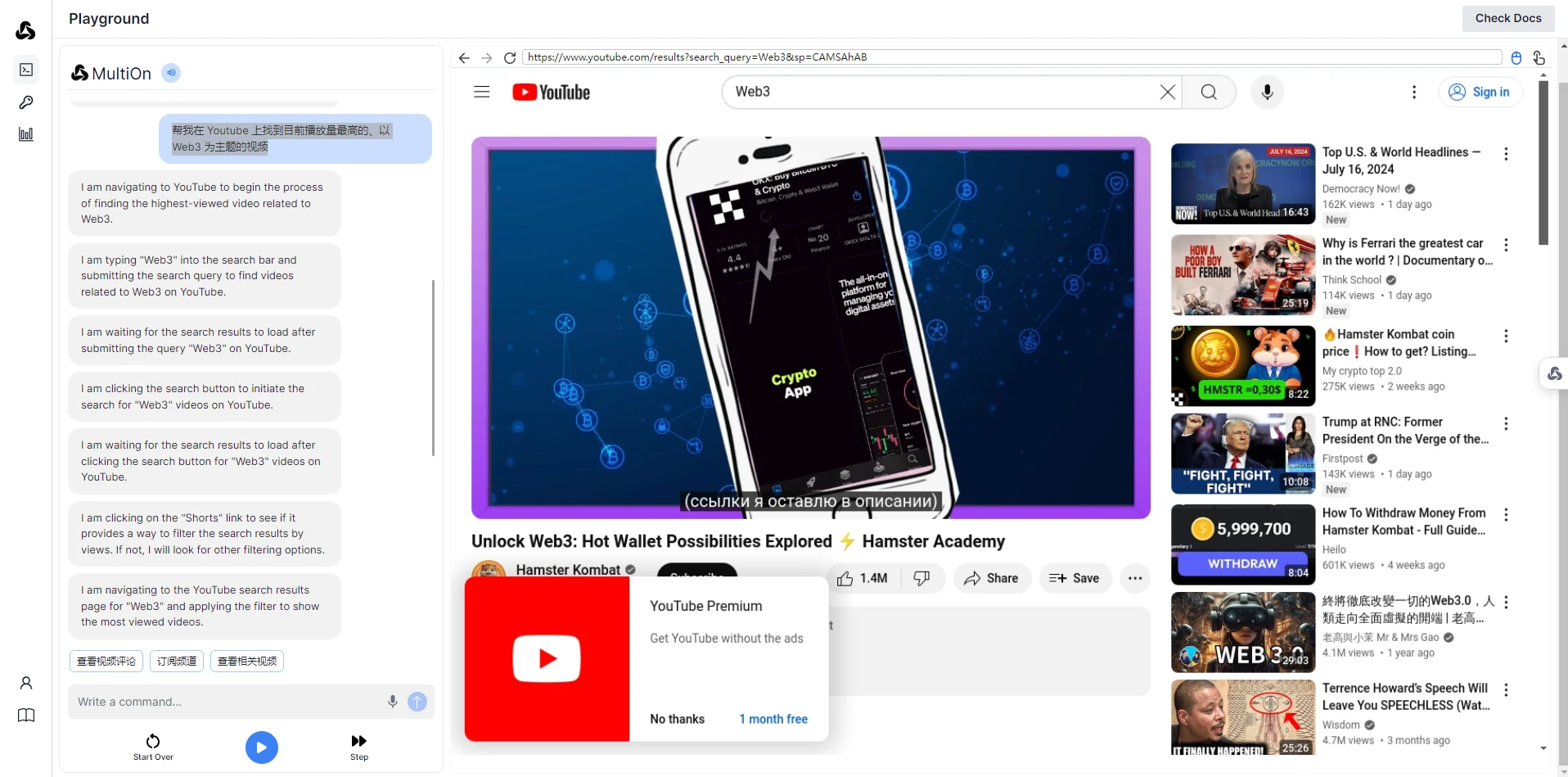
II. The New Revolution of Web3 x AI Agent
First, what can Web3 bring to AI Agent? In other words, what are the benefits of moving AI Agent to the blockchain?
- Censorship resistance
AI Agent based on LLM. Centralized LLM tends to produce results biased towards censorship, which can limit the spread of true information to some extent. Using decentralized LLM to build AI Agent can solve this problem.
- Decentralization/ownership
Similarly, unless one spends a huge amount of data resources to build LLM, the core data of AI Agent is still stored with centralized AI providers.
- Monetization
AI Agent Launchpad? Coin governance for a certain AI Agent, IAO (Initial Agent Offering), providing a disguised way for AI Agent developers and investors.
- Composability/Lego
Interactions, transactions, and empowerment among AI Agents on the same network. If we consider the composability of DeFi, it would not be surprising in the future for a Web3 AI Agent to achieve tasks such as selecting investments, finding the best liquidity on DEX, completing token exchanges, and monitoring returns, all with just one Web3 AI Agent.
Conversely, what can AI Agent bring to Web3?
On-chain conversational AI Agent, in addition to the specific domain professional knowledge collection and organization that Web2 Agents can do, it can also retrieve and summarize on-chain information in Web3, greatly simplifying the process of Web3 user chain research.
Just looking at the concept of AI Agent, there is also MultiOn, which really makes me think of the Intent-Centric that has always been milked (centered around intent), aiming to free the hands of on-chain users and change the way they interact with Web3, achieving mass adoption. These interactions include but are not limited to swaps and airdrop interactions. Imagine saying to an AI Agent, "Help me complete Linea's airdrop interaction," and the AI Agent can obtain tutorials from KOLs online and then automatically complete the steps through the on-chain wallet. (Then it seems like there's no need for a fur studio anymore?)
Or "Help me build an ETHBot that buys ETH with 30% of my USDT balance when ETH is below the MA200," monitoring the market around the clock, isn't that attractive?
If every solver uses an AI Agent that can automatically interact on-chain, it actually achieves the most important piece of the intent protocol puzzle.
For more information about Intent-Centric, you can refer to my previous public account article.
So here, I want to categorize the current Web3 x AI Agent track-specific products into two types, one is Web2-style on-chain conversational AI Agent, and the other is the more Web3 Native AI Agent mentioned in the previous paragraph.
The first type can be understood as an AI Agent created on a certain Layer-1, suitable for Web3 users to learn specific domain expertise and conduct on-chain research. Does not include on-chain operations
The second type can be understood as logically on-chain, helping users to achieve specific interactions on the chain. Includes on-chain operations
Of course, my classification is based on the most basic "whether the AI Agent has on-chain interaction capabilities," and does not consider whether it is based on reliable, verifiable decentralized AI models.
Below, I will introduce two typical projects, GaiaNet and Spectral, and make a horizontal comparison.
III. Spectral (with on-chain operation capabilities)
Formerly a credit scoring protocol based on Ethereum, aimed at providing a new way for lenders to assess borrower credit risk.
In 2023 Q4, it transitioned into a machine intelligence network, allowing users to build on-chain AI Agents and form an on-chain agent economy.
1. Business Model
Four important products of Spectral:
Spectral Syntax, an official collection of Agents developed by Spectral, where users can tell a specific Agent what to do, and the Agent will convert natural language intent into executable code to help users complete tasks. For example, creating NFTs, creating Memecoins, automated trading, and on-chain information retrieval. I personally experienced the MoonMaker Agent, which can automate tasks from creating names, designing logos, to deploying CAs.
Spectral Nova, a decentralized platform that provides machine learning inference directly to smart contracts, where top scientists, enterprises, developers, and engineers can build AI models and earn user fees. Additionally, model creators can issue challenges with rewards. Solvers (bounty hunters) solve challenges and win rewards or receive income dividends. Creators, solvers, validators, and consumers interact with each other on Spectral's machine intelligence network, forming a flywheel through incentive mechanisms.
Agent Wallets, launched in 2024 Q3, integrates AI Agents into wallets to help users perform on-chain operations and simplify the Web3 user experience. For example, it supports gas-free transactions using USDC, and the Gas Asset Agent will automatically execute the exchange.
Inferchain, a Layer1 narrative based on AI Agents, which will integrate Agents from Syntax and Nova, promoting interoperability among these Agents. It will be launched in 2024 Q4.
2. Development History
Completed financing as a Web3 credit risk assessment infrastructure in 2021-2022.
In March 2024, Syntax was launched, officially transitioning to the on-chain AI Agent narrative.
In May 2024, the TGE was launched, initiating the first season airdrop.
In June 2024, it partnered with the crypto wallet Turnkey and launched Agent Wallet in Q3 (Turnkey previously raised $15 million, with investments from Sequoia and Coinbase).
3. Integration of AI x Web3
Inferchain is the final piece of the puzzle in the Spectral ecosystem, realizing its ultimate vision of easily developing on-chain AI Agents and enabling them to communicate and interconnect, ultimately achieving the transparency, decentralization, and verifiability of AI applications in the Web3 domain.
4. Value Generated
Addresses the expensive trial and error costs of centralized AI, reliance on a single source, and the issue of information authenticity.
Enables ordinary (non-technical) users to quickly create on-chain Agents.
Promotes communication among on-chain Agents.
5. Spectral Token Economics
$SPEC can be used as a means of payment for using community-developed AI Agents. It is also used for decentralized governance and staking mechanisms:
In Spectral Syntax, users staking SPEC have the right to create AI Agents and access community-created AI Agents.
In Spectral Nova, validators need to stake SPEC as collateral to verify challenges completed by solvers.
$SPEC is listed on trading platforms such as Bybit, Gate.io, and MEXC, with a circulating market value of $85 million and a fully diluted valuation of $800 million.
Currently, only the first season airdrop and liquidity provider shares account for 10.3% of the total supply.
⚠️In May 2025, the unlocking of core contributors and investors will begin. If the crypto market continues to rise in the coming months, attention should be paid to the selling risk after the unlock.
6. Team Background
Sishir Varghese - Co-founder and CEO
Previously co-founder and managing partner at AlphaChain, and also served as a strategic partner at Loopring.
Mihir Kulkarni - Product Manager
Formerly a product operations manager at Coinbase Institutional.
7. Financing Situation
Round 1:
Galaxy, ParaFi Capital, Maven 11, Alliance DAO, Rarestone Capital…
Round 2:
General Catalyst, Social Capital, Jump Capital, Samsung Next, Circle Ventures, Franklin Templeton, Section 32…
Backed by super major VC investors, such as Franklin Templeton, Samsung, and Google.
8. AI Agent Usage
Q2 2024 data:
Registered users: 65,362
Number of contracts generated by SYNTAX: 1,055,568
Average interaction frequency per user: 25
Number of Memecoins created using MoonMaker: 5,043
IV. GaiaNet (does not have on-chain operation capabilities)
GaiaNet is a distributed AI infrastructure that will gradually become a decentralized AI Agent ecosystem.
1. Business Model
Node is equivalent to Agent, Node = Agent. In my own practice of setting up nodes, when I converse with the AI Agent corresponding to my node, the AI Agent's output results consume computational resources.
To build a network of AI Agents based on Ethereum, aggregating AI Agents' knowledge bases in the form of nodes, allowing individuals and enterprises to quickly build AI Agents based on their specific domain expertise and provide them to the demand side for profit.
The three core components of the GaiaNet network:
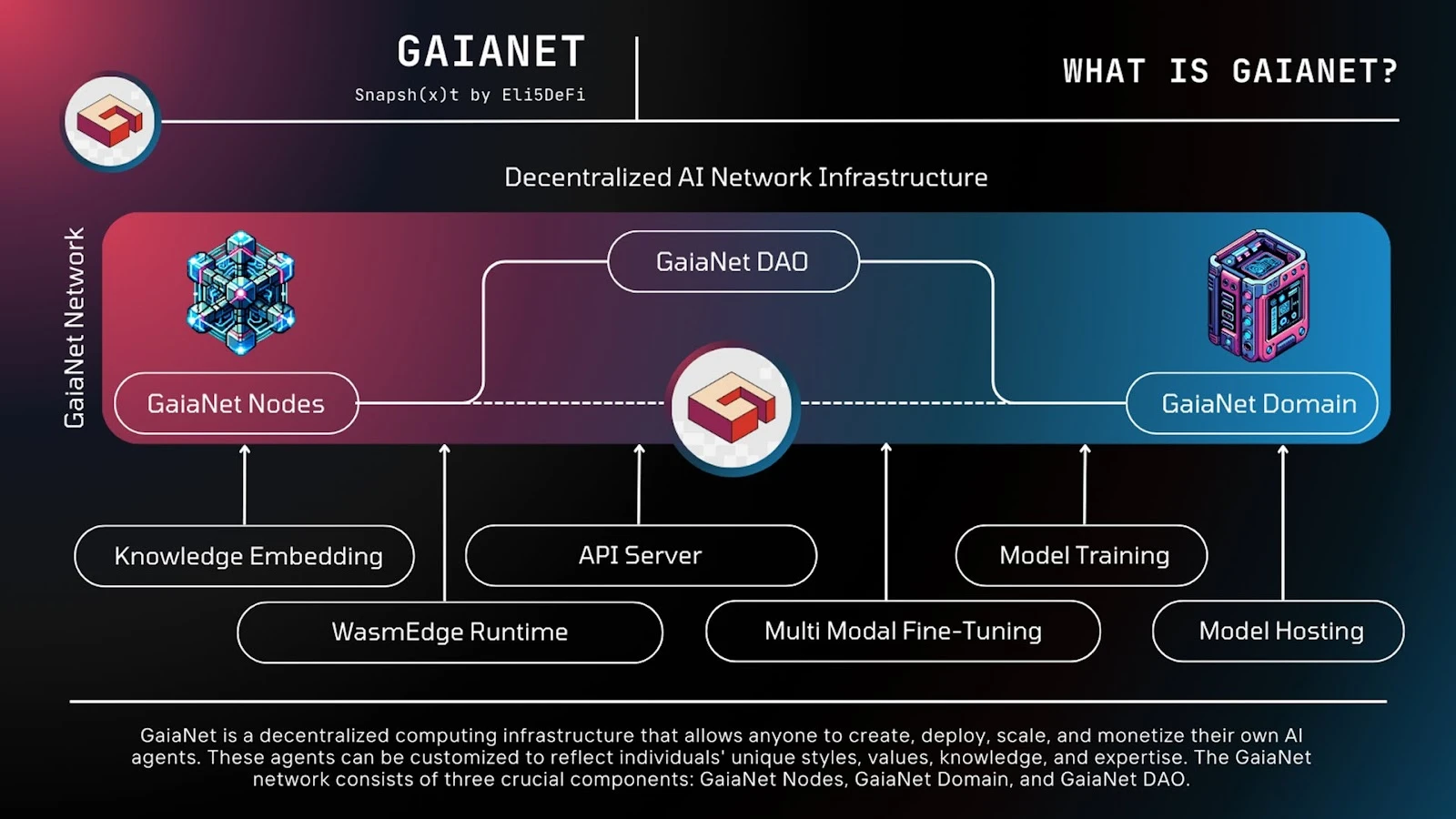
• GaiaNet Nodes
A comprehensive software stack that allows individuals and enterprises to quickly deploy AI Agents integrated with their domain expertise.
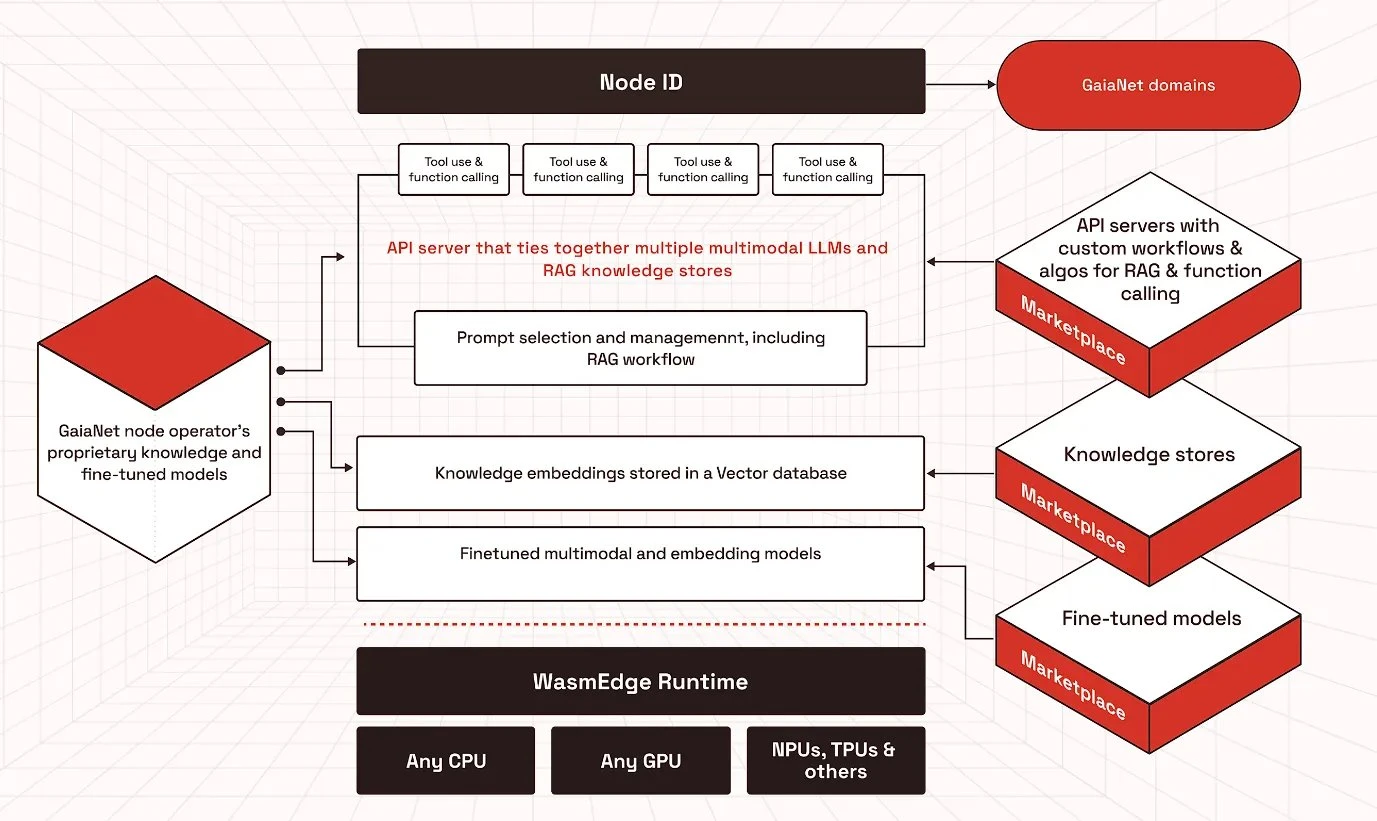
• GaiaNet Domains
A collection of nodes registered under internet domains, managed by domain operators. The official concept is that each domain is specific to a professional field, such as finance, healthcare, education, where specific AI Agents with specific functions exist under these domains. User process:
Users pay fees to nodes (AI Agents), and the fees are held in on-chain smart contracts. A portion of the fees is taken by the domain operator, who then provides services to users.
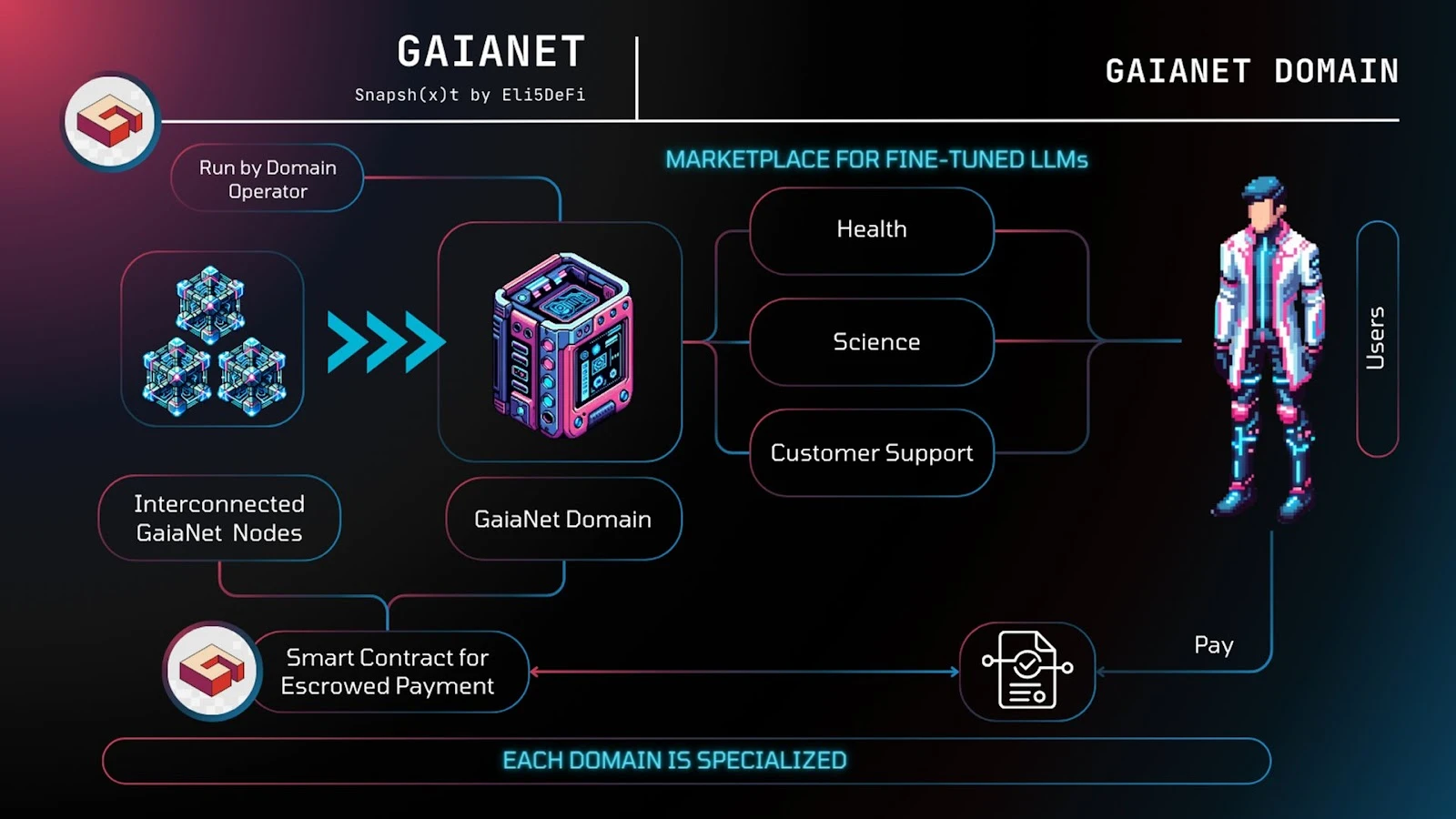
• GaiaNet DAO
Stakers stake tokens with domain providers to provide "trust";
↓
Domain providers manage qualified nodes to provide "guarantees";
↓
Users select and use AI Agents under the domain provider, and the fees are shared among nodes, domain providers, and stakers.
In fact, there is also a role for component developers. Non-AI Agent developers can earn income by fine-tuning NFT-based models, knowledge bases, plugins, and other components from AI Agent developers in demand.
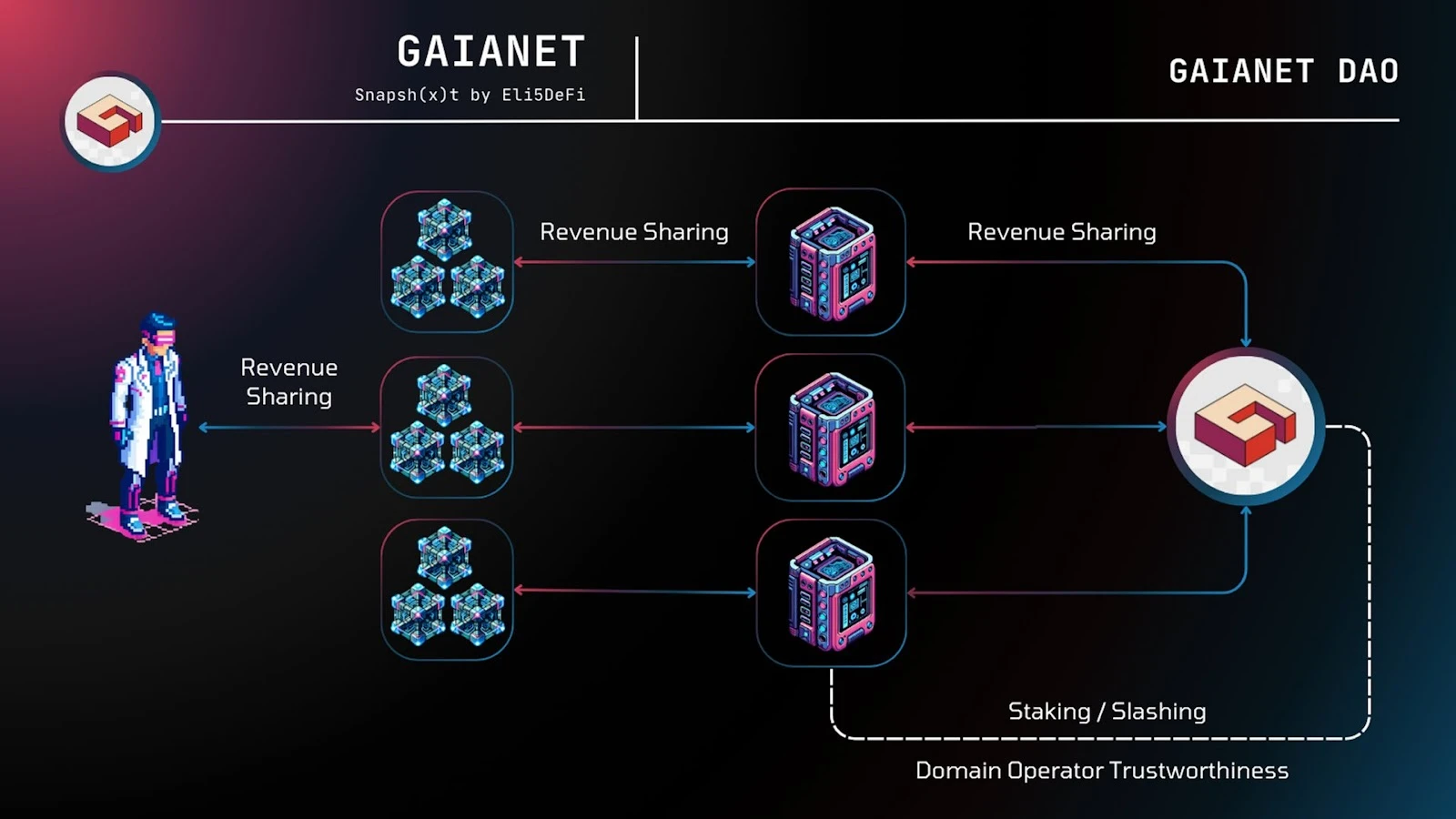
2. Integration of AI x Web3
Moving the Web2 AI Agent ecosystem to the chain.
3. Value Generated
Developers can more easily deploy Agents, Gaianet nodes support all open-source LLM, multimodal models, text-to-image models, text-to-video models, which can be added and fine-tuned according to their choice.
On the basis of domain providers, a collection of AI Agents with professional knowledge will be generated for each industry and field.
4. GaiaNet Token Economics
Not yet issued, tokens are used to pay for others' Agents in GaiaNet.
5. Team Background
Matt Wright - Co-founder and CEO
Graduated from the University of California, Los Angeles, previously served as community manager at Consensys, and co-founder of EVM Capital. Formerly worked at JP Morgan.
Shashank Sripada - Co-founder
Has a venture capital background in Web2, founded and worked for multiple VCs. Graduated from the London School of Economics and has some political background.
Sydney Lai - Development and Marketing Director
Co-founder and CTO of EVM Capital, graduated from the University of California, Berkeley.
6. Financing Situation
May 28, 2024, Seed Round, $10 million
Mantle Network, ByteTrade, EVM Capital, Mirana, Lex Sokolin (Co-founder of Generative Ventures), Kishore Bhatia (Founding Member of Superscrypt), Brian Johnson (Crypto Lead at Republic Capital).
7. AI Agent Usage
User volume unknown, only 35 available conversational AI Agents, covering knowledge in finance, crypto, programming, and other fields. Current total number of nodes: 18,594.
Due to the testing phase and the ability to run nodes in parallel, it is speculated that the majority of nodes are used for batch airdrops.
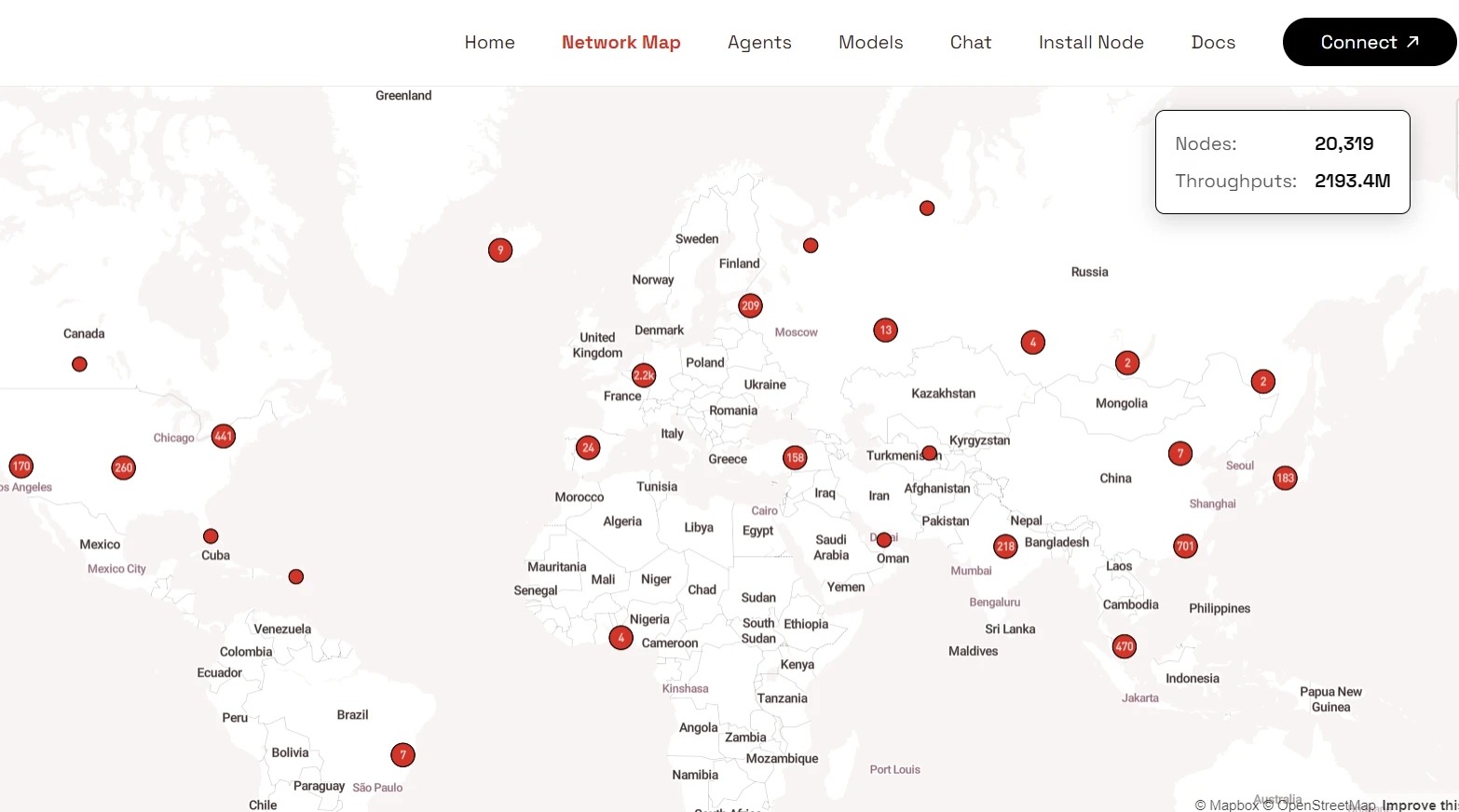
V. Overview of Other Early AI Projects
Zotto: Users can create their own AI Agents to achieve trading intents, such as mirroring smart money addresses, triggering transactions under multiple conditions, etc. It has recently been launched on the Testnet and is worth paying attention to.
AgentLayer: Built on the OP Stack, a Layer2 that focuses on AI Agents, aiming to promote connectivity between self-developed and community-developed AI Agents.
Olas Network: A off-chain AI Agent ecosystem where a single Agent or multiple Agents collaborate to complete tasks off-chain and transmit the output to the chain.
Theoriq: Theoriq aims to be a modular, composable AI Agent base layer.
AgentCoin: Transitioned from a mature AI Agent product, evo ninja, in Web2, to a general Web3 AI Agent.
Giza: Developing a Web3 AI Agent framework, using ZKML for off-chain reasoning and on-chain execution.
Olas Network: A Web3 AI Agent ecosystem where a single Agent or multiple Agents collaborate to complete tasks proposed by users off-chain and transmit the output to the chain.
END>
免责声明:本文章仅代表作者个人观点,不代表本平台的立场和观点。本文章仅供信息分享,不构成对任何人的任何投资建议。用户与作者之间的任何争议,与本平台无关。如网页中刊载的文章或图片涉及侵权,请提供相关的权利证明和身份证明发送邮件到support@aicoin.com,本平台相关工作人员将会进行核查。




